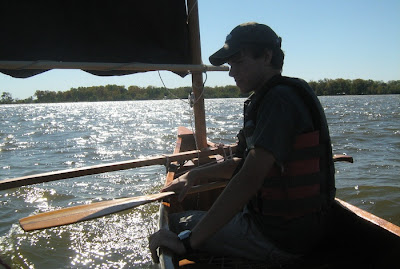His site:
hemelboards.com
My goal with the visit was to learn his proprietary laminate, and vacuum bagging system as well as to design stand up paddle blades for him.
We had a great week of shop work and some great meals in Seattle.
His boards are hollow and made of cored top and bottom panels. His laminate schedule is very strong and the boards can take some abuse. Since they do not rely on a solid foam core for structure and strength, he has no weight penalty. They are right in their weight class.
This design prevents small nicks from causing water intrusion which makes standard boards heavy and shortens their life.
During the week, I designed two blades. The first is a standard blade with a 12 degree ferrule offset.
The second is a high cadence blade for racing. It has a longer narrower blade. Both have a triangular cross section.
They are designed to use a carbon fiber shaft. There will be carbon versions as well as glass versions.
Here are photos of the excursion...
A Hemel SUP



























